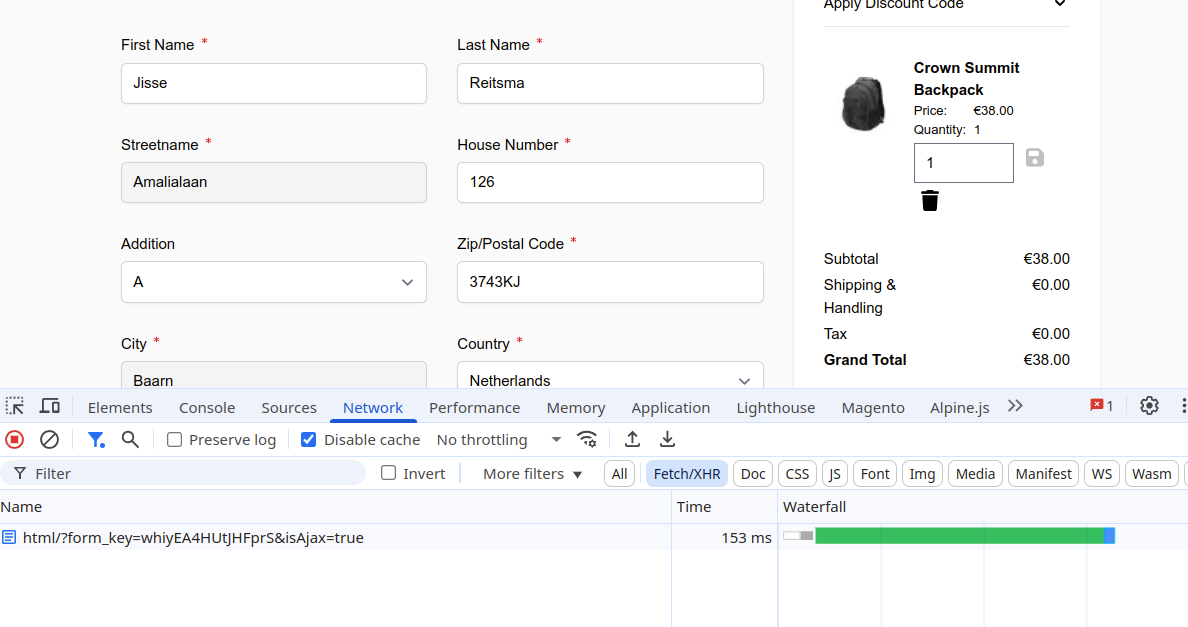Performance
By using a brand new LokiComponents architecture, the LokiCheckout is able to outperform many other checkouts by far. Every single update that needs to be sent to the server also fetches HTML updates for various parts on the page as well. Any thanks to the extensibility of the LokiCheckout, any developer is able to use this functionality in custom modules as well.
Initial pageloads
The first pageload of the checkout is quick and allows for direct navigation. Often, the HTML document itself (as generated by Magento) is loaded under 400ms. To be fair, this hugely depends on the third party integrations that you are adding. But at least, the architecture of the LokiCheckout is helping you beat the competition and make sure that your visitors enjoy a fluent experience.

Fast page updates
Whenever changes are made to the checkout pages (adding address fields, picking a payment method), those changes need to be saved to the Magento backend as quickly as possible, to make sure that data is not lost when the page reloads. With the LokiCheckout, whenever a field changes its value, that value is submitted to the Magento application with an AJAX request.
That very same AJAX request possibly leads into areas of the page requiring an update too - the sidebar, other form fields, etcetera. Instead of making multiple AJAX call, the LokiCheckout reloads all HTML elements in that very same AJAX request. Often, changes are made within 200ms (within the blink of an eye, so to say). And often, this is so fast, that showing a temporary loading icon is just adding confusion - so we only show the loader after a small delay.

